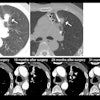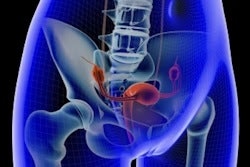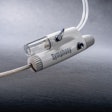Dear AuntMinnie Member,
Minimally invasive cryoablation has been used to treat women with small breast cancer tumors. Recently, however, researchers explored the use of the technique in women with tumors that ranged up to nine centimeters, with promising results. Click here for the story.
The study was presented at the Society of Interventional Radiology (SIR) annual meeting held this week in Salt Lake City, UT. Other research presented included work that showed how uterine artery embolization (UAE) could be a promising alternative to hysterectomy in women due to severe bleeding after childbirth.
In another SIR session, researchers from the University of California, Los Angeles suggested that MRI-guided transurethral ultrasound ablation (TULSA) is effective for treating prostate cancer.
In other meeting coverage – in this case the recent ECR 2024 meeting in Vienna – we featured a presentation that highlighted the many uses of contrast-enhanced ultrasound in interventional settings, such as assessing ovarian lesions or identifying endoleaks.
Aside from meetings, we noted recent studies describing how endovascular thrombectomy (EVT) is showing its stripes as a valuable intervention in stroke patients. In research published over two days in JAMA and JAMA Open Network, a team at Case Western Reserve University in Cleveland, OH, showed that EVT is valuable in patients requiring transit to stroke centers and can improve outcomes compared with medical management.
When it comes to percutaneous coronary intervention, the jury may still be out on whether intravascular ultrasound or coronary angiography is best for guiding stent implantation, according to a recent article.
In other interventional radiology developments, a group at NYU Langone Health in New York City explored whether the use of virtual interviewing due to the COVID-19 pandemic changed residency matches in the field.
Finally, with planetary health and sustainability an emerging field in radiology, we noted an article by a group in Switzerland that found that powering down idle IR imaging systems can substantially decrease carbon emissions and electricity costs.
That's all for now. Be sure to check our Interventional content area often for more news.



















